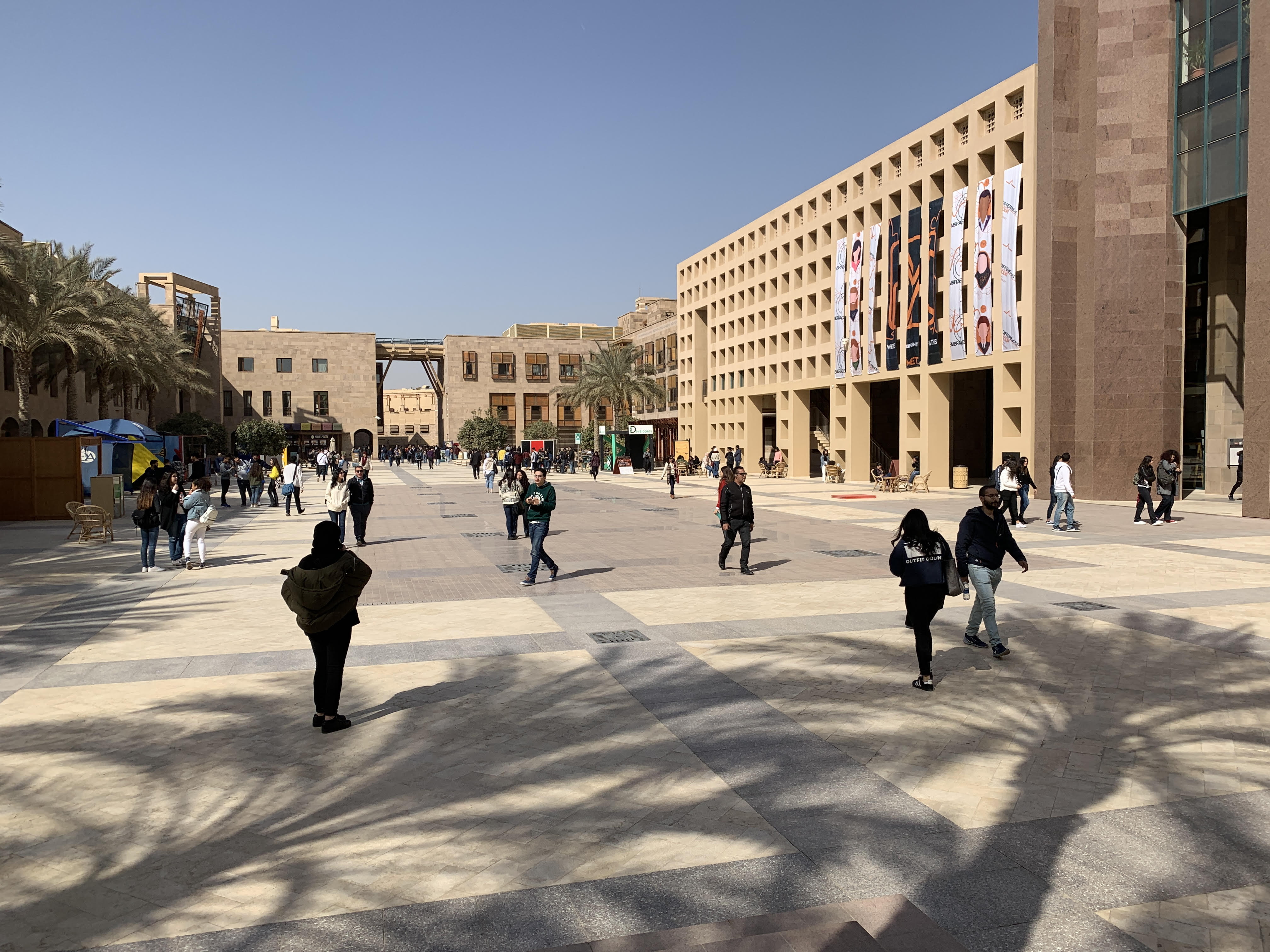Online Teaching: The Secret Behind AUC’s Success
By: Doha Wang
@DohaWang
When AUC switched to offering classes remotely last spring, the Center for Learning and Teaching (CLT) immediately responded by training faculty members to cope with the new virtual platforms.
The decision to teach remotely came in March 2020 when COVID-19 cases began to rise locally and globally. The safety and security of AUC students and faculty was the administration’s top priority.
However, this also presented a herculean challenge: how to effectively plan and carry out a training program for over 540 faculty members with basic tools to help them develop their online teaching skills.
“The training program was developed quickly and delivered over 12 days face to face and the content was built and made available to faculty on our website as well,” CLT Director and Professor of Practice Hoda Mostafa said.
The number of faculty members who have reached out for help and consultation on technology and pedagogy numbered 407, Mostafa said.
Both the CLT and AUC’s Learning Management Systems (LMS) staff provided training sessions to the faculty. Some sessions were held face-to-face on campus, which lasted from two to three hours in early March, while others were provided through web-based training to better equip the faculty.
“The training sessions were very well designed, catered for the different levels of trainers, facilitated a lot and gave due care for each one’s needs,” said Nehal Abou El-Nagga, associate professor at the department of applied linguistics.
Initially, many AUC professors were concerned about the technological difficulties they might face when they were told that they would be expected to teach online.
“I almost freaked out because I was quite unfamiliar with all [the] remote teaching tools, even Gdrive [Google drive], so I thought that would be extremely difficult,” Abou El-Nagga said.
Some professors even had to resort to other resources such as Google and YouTube for tutorials on how to better prepare themselves for the weeks ahead.
Nehal El-Naggar, professor at the department of Arab and Islamic civilizations, said that she felt at ease knowing that they could always contact the CLT if they were to face any difficulties.
“One of the struggles was the sudden shift to something you know nothing about and you have to familiarize yourself with in a week. It’s the novelty of the so many features in these platforms that you have to master in a very limited time in order to be able to deliver a successful class experience,” El-Naggar said.
Another main concern was the lack of physical presence of the professors and students together in class to facilitate communication.
El-Naggar was at first worried about impact.
“Are the students going to benefit from my class while we are remotely communicating? What about eye contact and body language, both of which play a very important role while in face to face class?” El-Naggar said.
Almost all professors had to change their syllabi to better accommodate them with virtual teaching. Some altered their grading systems to become more lenient, while others had to eliminate group presentations. Some of the professors also had to replace final exams with research papers and projects or make them into open book exams.
“Before COVID-19, the syllabus was rendered in three and a half pages. Now it’s thirteen pages, because there are so many details that you have to include to clarify everything to the students. Every aspect in the syllabus is very well defined,” El-Naggar said.
Other professors were worried about how online teaching would affect their interaction with their students in terms of individual conferences, as well as the engagement and participation aspects of classes.
“I was also concerned that students would no longer feel motivated to do anything in the course, whether that was turning in assignments, doing the readings or watching recorded lectures,” said Lameese El-Desouky, assistant professor at the department of psychology.
Even though the training sessions provided by the CLT were given to the faculty in such a short period during stressful times, it was extremely beneficial to them. It has helped them facilitate teaching online.
Professors have also found it helpful to talk to other colleagues regarding the technological challenges they face. With time, they were able to have their students use BreakOut rooms for activities and the raise hand feature on Zoom during discussions.
“I think most instructors and students are more logistically and emotionally prepared for this shift [this fall] compared to last semester,” said El-Desouky.
When asked about the role that CLT played in the process, El-Naggar explained that the CLT training sessions were the “backbone” of all the professors’ success during the Spring semester.
“I was extremely worried that the online experience would’ve been dull and boring. But I was surprised to see the professors being more energetic than ever before, not to mention the usual high standards of teaching. Nothing comes close to the campus experience, but their dedication is remarkable,” said Youssef Abdelaty, a business sophomore.




